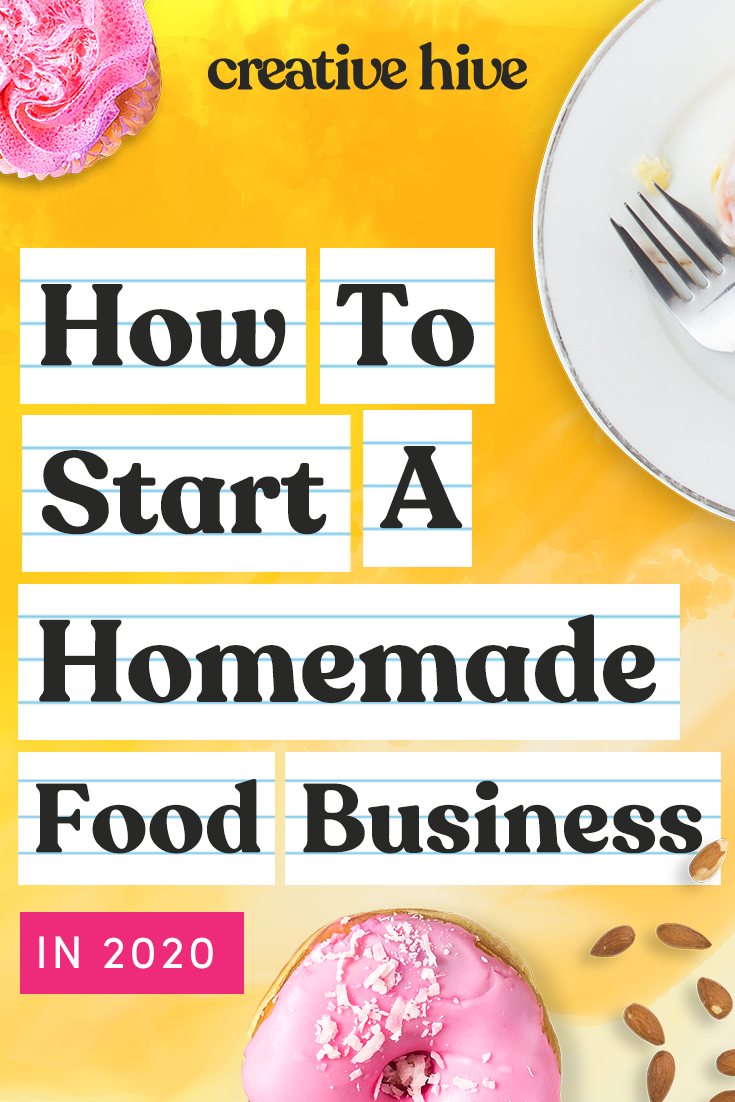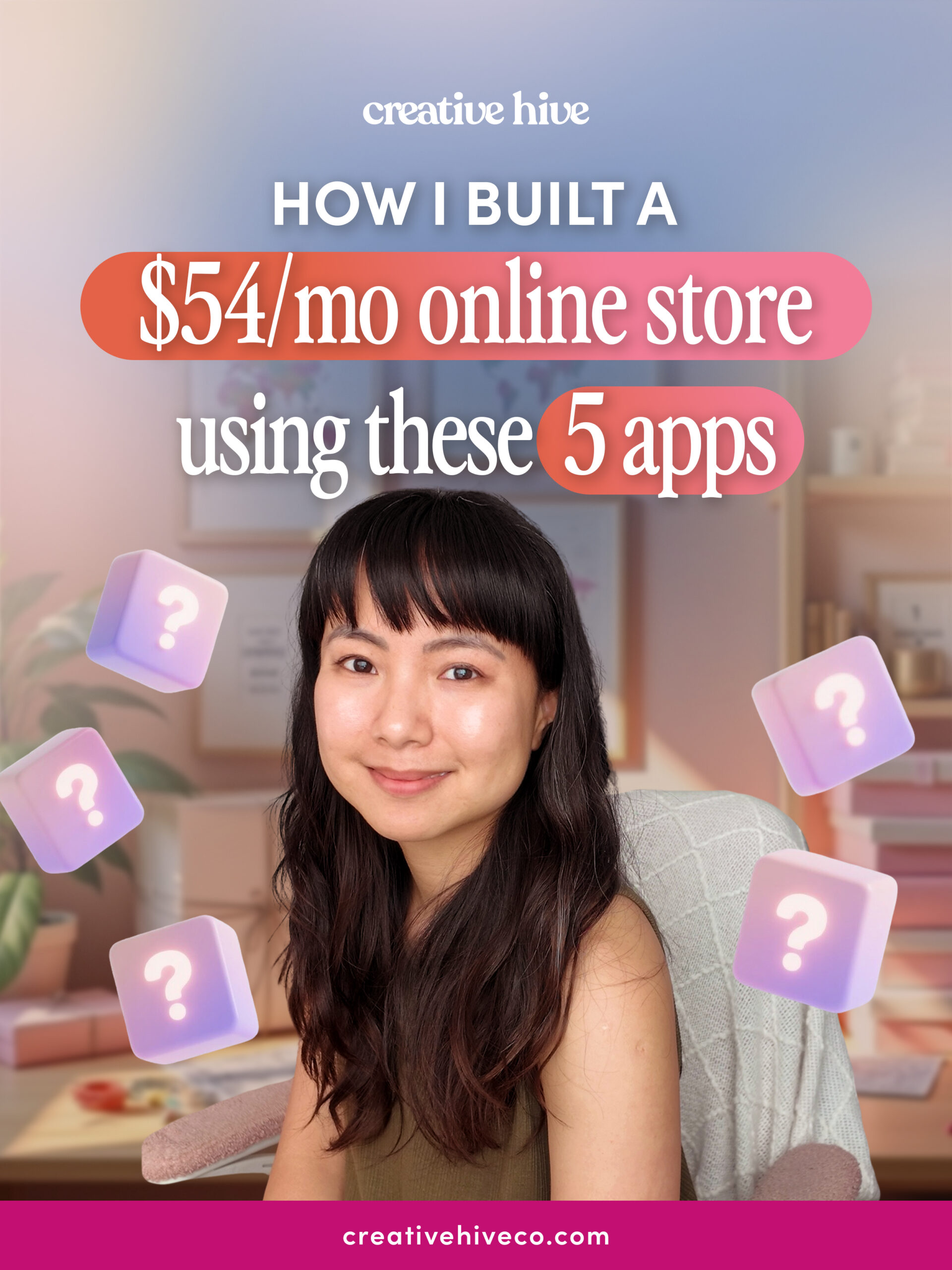I want to help you build a sustainable, profitable handmade business that makes you consistent income and sales. I only ever teach or recommend marketing, social media, pricing, production and branding tips that I’ve personally used successfully in my own 7-figure handmade businesses.
I'm Mei, from Los Angeles!
Read More
Popular Posts You'll Love
Looking for something?
Categories
starting a business
get more traffic
running a business
make more sales
branding
growing a business
mindset & productivity
podcasts
pricing & money
product photography
reviews
selling on etsy
selling on amazon
social media
selling wholesale
- Facebook0
- Twitter5
- Pinterest195
- 200shares
Want to turn your cooking skills into a highly profitable food business?
In this post, I’m going to share 5 steps for how you can start a food business from the comfort of your own home.
I’ve been selling handmade jewelry for 14 years and it’s been such a dream that I’ve been able to turn my hobby into a full-time income.
Today I want to show you how you can do the same with a handmade food business.
It’s gotten a little crowded out there, but the food industry still generates trillions of dollars and people are always going to need to eat. It’s not going anywhere anytime soon.
Sure, you’ll need to research the market to find some wiggle room, but once you’ve honed in on your offer, you’ll be glad to know that brand loyalty is a big deal, especially when it comes to food. This means, once people have built trust towards your brand, they’re likely to stick with you for quite some time, if not forever.
Also, food and drink are consumable products, so that’s built-in repeat sales for your business and a nice stream of recurring income.
Running a business can be a roller coaster sometimes with some months giving you slow sales and other months are crazy busy. The nature of consumable products businesses, however, is your roller coaster is a much more tame one, like a kiddie ride roller coaster.
Once you’re established, you should be able to experience more consistent sales relative to other types of businesses and you don’t really need to worry about competing with the big brands out there because since the internet has been around, consumers have become far more product-aware, making a lot more room for small business owners and their specialty products.
So, if you’ve decided you want to start a homemade food business, here’s how to get started in 5 simple steps.

Step 1: Find Your Angle
When it comes to food and beverage businesses, finding an angle to set yourself apart is especially important. If you already have a passion or hobby for what you want to do, you’ll need to validate your idea by making sure there’s even a market for what you’re offering.
If you’re not too sure yet, you can look into up-and-coming food trends and lifestyles. If the market for your product is saturated, you’ll need to find a way you can stand out.
The easiest way to do that is by finding an untapped sub-audience for what you’re offering. That’s an audience within an existing audience.
- Are there people looking for an organic or local alternative for your kind of product?
- Can your product offer an alternative for certain dietary restrictions like gluten-intolerance, nut allergies and so on?
- Can you base your products on a certain lifestyle choice or religious belief, such as veganism or halal food?
- Can your products offer new and exciting flavors that haven’t been done before?
New consumer demands come with new opportunities, but there’s so much competition out there, which is why tapping into the right angle is so important for your success.
A perfect example is La Croix’s flavored sparkling water. Because people are becoming more aware of unhealthy sugary sodas, La Croix came out with their healthier, sugar-free alternative and they’re doing so well.
Or check out at Bull & Cleaver’s meat business and how they’ve adapted to an entire generation of vegans with their Mushroom Vegan Biltong.
There’s really no limit to how far you can niche down, as long as there’s a market for what you’re selling.
Some final considerations when coming up with your angle are things like the shelf-life of your products, the ease of sourcing ingredients year-round, and whether they require certain shipping conditions, such as for refrigerated products. These will all factor into the costs and complexity of running your business.
Step 2: Source Your Ingredients
Alright, once you’ve decided on your product line, it’s time to source your ingredients.
When it comes to finding suppliers, the internet is an excellent place to start but don’t be afraid of using word of mouth either.
When you’re just starting with small batches, you may find it more cost-effective to shop for ingredients at consumer warehouse stores like Costco’s or Sam’s Club. If you need to purchase from wholesale suppliers, you can actually team up and split the bill with other small-batch producers.
Regardless of how you source your ingredients, it’s important that you trace them back to their routes carefully, so you can back up any claims your product makes about being organic or nut-free and so on.
Don’t be afraid to ask your suppliers about their methods of production and to see any certifications to back up their claims.
This will allow you to correctly label your products, which is a very important part of being a food business, and your customers will definitely appreciate the transparency. Once you’ve found your suppliers, you’re ready to set up your kitchen.
Step 3: Set Up Your Production Space
Some types of foods can be made in and sold directly from your home kitchen, but you’ll need to look into the legal requirements for your specific state or country laws about this.
In many states in the US for example, the Food Drug Administration requires that you prepare, label, and package food in a licensed kitchen. For other states, you can just get away with getting just a food permit to work out of your home kitchen.
Some states also limit what you can sell on and off the internet. Check out Cottage Food Regulations. This law allows you to sell your homemade food made from your kitchen.
I’m not going to go into all these legalities because I’m not a lawyer but also every state has different rules about it, so do your research, reach out to your local health department or work with a lawyer if you need to.
If your product requires any special equipment, you’ll need to factor that into your startup costs well, however, if you don’t have the money to buy expensive machinery or if you want to sell your products online and ship them across the country, you can look into renting a shared, licensed commercial kitchen.
These are shared kitchen spaces that you can rent anywhere from hourly to monthly. This will reduce your upfront costs and it’s also less paperwork because these facilities are already registered as licensed spaces.
Step 4: Setting Up Your Shop
There’s a lot of ways you can go about selling your food both online and offline. The more you diversify, the better.
You can wholesale your products to local stores, participate at fairs and farmer’s markets, and then there’s online selling, which is exactly where I suggest you get started.
Marketplace sites like Etsy and Amazon are great places to sell food products, but I suggest you start setting up your very own shop over on Shopify first.
Shopify is a reliable ecommerce platform that’s already being used by thousands of food businesses because it has really powerful marketing tools. Unlike Amazon and Etsy, where you’ll need to compete for space with other sellers, Shopify lets you build your own shop with your own branding, which is important to help you stand out from the crowd and be more memorable.
Another reason I recommend having your shop be the core of your business is that it allows you to do things like build an email list, retarget site visitors with your own paid ads and so much more, and all this means you get to build a more loyal following and a returning customer base, which is in part, the recipe for long term success.
When you’re selling on Etsy or Amazon, your customers never really belong to you. You don’t get to build a list of their email addresses to keep in touch with them. And if Etsy or Amazon makes a sudden change in their policies, you could be out of business in no time or struggle to make sales.
That’s why having your own shop and growing your own email list is so important. That email list is the most important asset in your business, and it’s one you own that no one can take away from you.
This doesn’t mean you shouldn’t be selling on powerful marketplaces like Etsy or Amazon, it just means you shouldn’t rely on them for your whole business.
Step 5: Marketing
Once you’ve set up shop, it’s time to get your products in front of the right people, but where do you start?
There are tons of marketing options out there but don’t be overwhelmed! Getting good at just one or two of them can sustain your entire business.
You’ve got both physical and digital marketing, but I suggest you use a combination of both to get the best results.
For example, you could market your products at the local farmers markets or fairs and throw in a coupon for your online store with every sale you make.
Depending on your product, you may want to pitch it to local restaurants, supermarkets and coffee shops.
Pitching your product to businesses who already serve your perfect customers is a great way to secure yourself repeat sales on a monthly basis.
Another great way to promote your product is through online video. People love to learn how their products were made and where they come from. It helps them build a connection to their food and it’s one of the big reasons they buy from handmade businesses.
When it comes to online marketing, I suggest you reach out to influencers, blogs, and magazines. You can reach out to lifestyle influencers, celebrity chefs, food bloggers and food editors to have them feature your products on their platforms for free.
For example, Oprah Magazine makes lists of her favorite food gifts that usually feature independent, specialty food products. I know for a fact that if you got on Oprah Magazine, you’ll be making tens of thousands of dollars in sales.
You could reach out to editors and bloggers by email, send them a package and if they like your product, they’ll talk about you. Media outreach can generate tons of traffic and sales to your site if you do it right.
Another fun way to market your products is to participate in a subscription box.
Take Fuego Box for example: these guys deliver a new handcrafted hot sauce to their customers every month. If you’re in the chili business, these guys already have your perfect customers! So why not reach out and ask them to feature you in one of their monthly boxes?
Or let’s say you’re making a vegan yogurt. You can send it out to a vegan lifestyle influencer or chef to try it out for free in exchange for featuring you in front of their audience.
These influencers already have a huge following of your ideal customers that would probably love your product. So why reinvent the wheel and spend all your time on building up your OWN social media following, when you could be putting your energy into hacking that growth, and accessing thousands of people with just the act of sending a simple email?
You could build up an entire business on influencer marketing and media outreach alone.
If you want to learn exactly how I personally got my products in front of millions of people for FREE then check out this video here.

Leave a Comment
Liked this article? Share it!
Unlock a Profitable Handmade Business
in Just 12 Weeks Without Using Etsy
or Social Media
FREE WORKSHOP
This workshop is for anyone who makes and sells a handmade or physical product, including jewelry designers, artists, paper designers, bath & body product makers and more!
What You'll Discover
The #1 mistake people make with Etsy & social media that causes shops to FLOP
The secret to making it with your handmade shop so it's no longer just a hobby
How to make sales in your handmade shop with ease so you can finally get to 6-figures
TAKE ME THERE
Your email address will not be published. Required fields are marked *
Leave a Reply Cancel reply
About
Blog
A Sale A Day
Student Login
Free Class
Contact
Terms
Become A Student
Watch On YouTube
Student Reviews
See My Handmade Shop!



I’m glad you mentioned the importance of using high-quality images to market food and beverages so consumers will associate your brand with good products.
Awesome! Thank you for this essential information. I highly suggest this site also to introduce a Food and Beverage, I hope you can gain more information.
–
Food and beverage public relations
The information that you have shared about the homemade food business is amazing. The food purchasing related business information. Subscribed your blog.